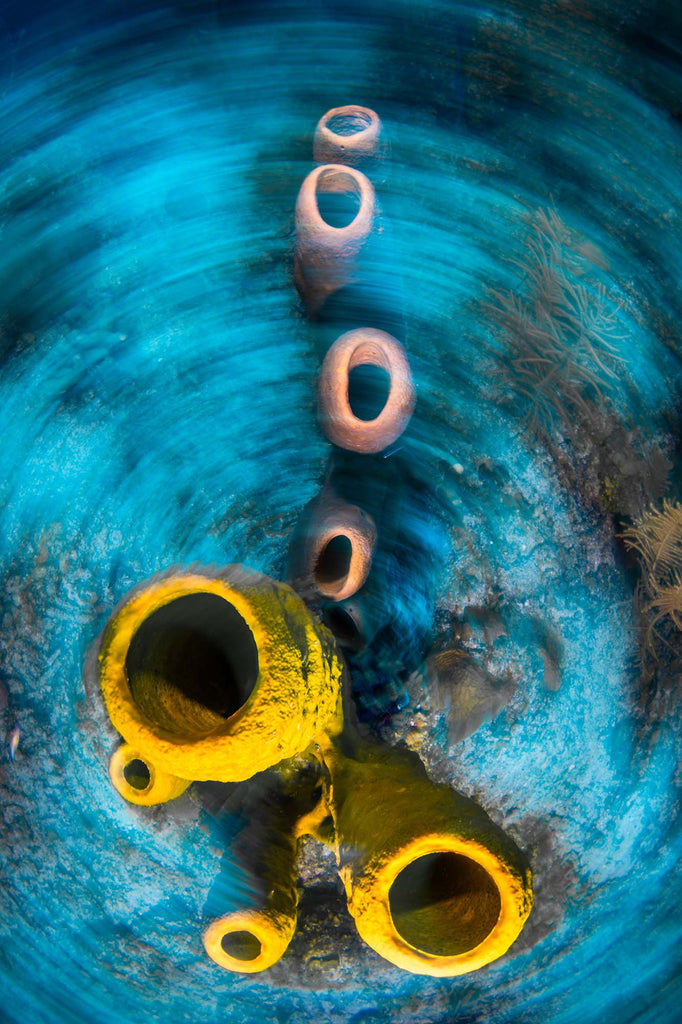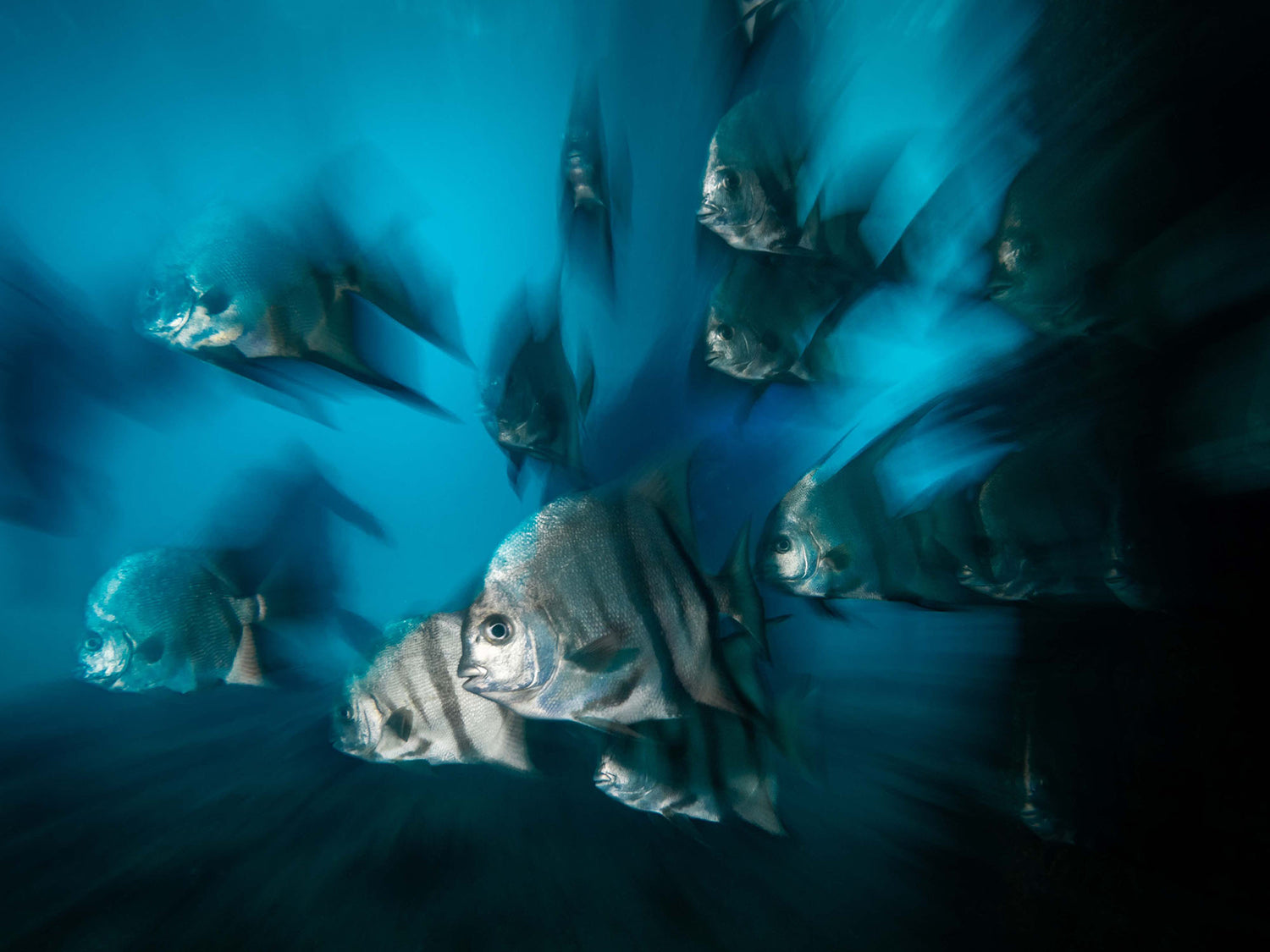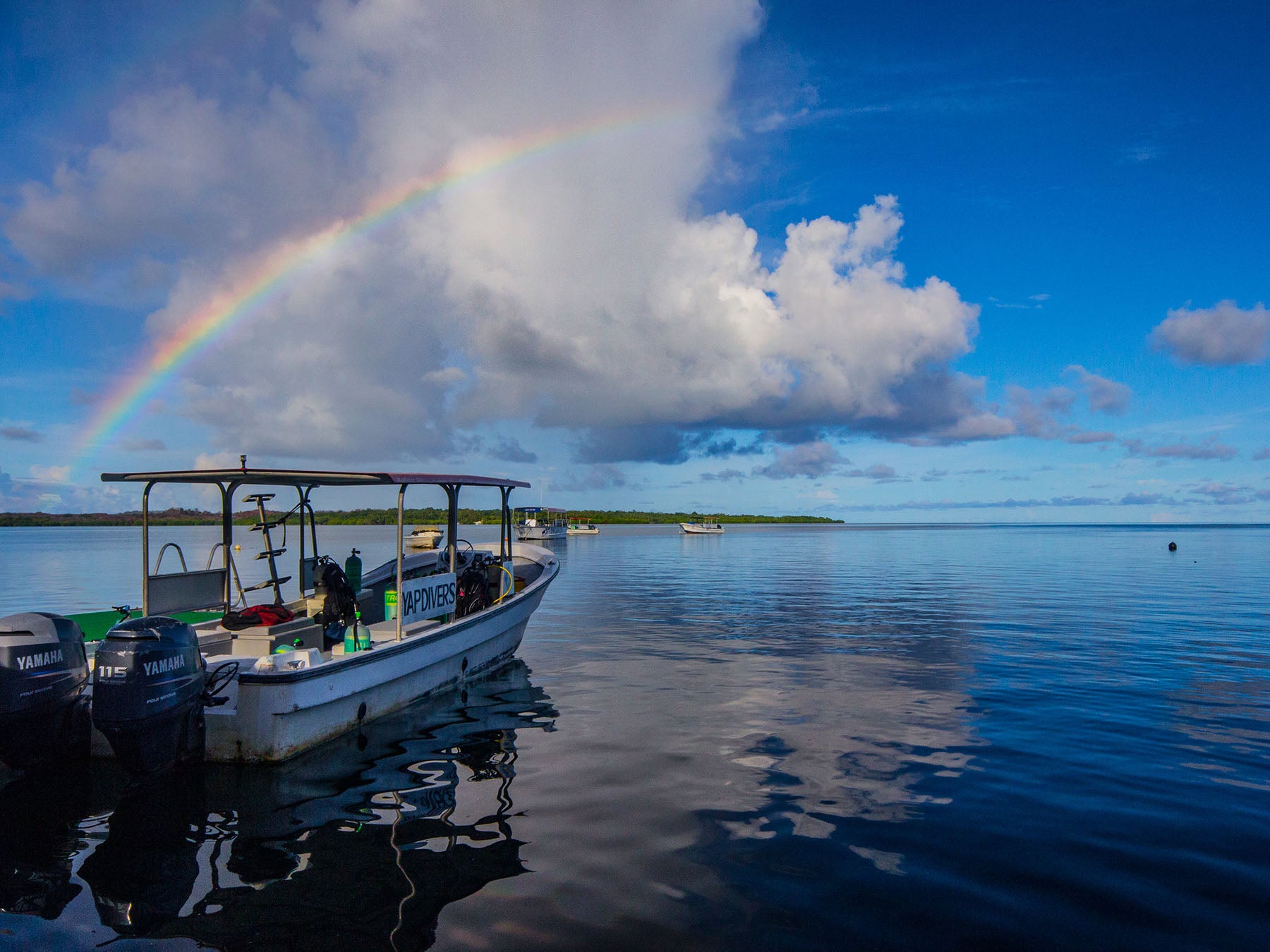Motion blur is all about creativity and experimentation, trial and error. Whether you're looking to tell a story or just create an abstract piece of art, motion blur is an exciting and challenging technique you can incorporate into your repertoire today using these simple camera settings and techniques.
DSLR + Mirrorless
Mode: Manual
ISO: 100
Aperture: f/18
Shutter Speed: 1/5th to 1/15th
Flash: High Power
Lens: Fisheye or Wide angle lenses are most common. Standard and macro lenses can work too! But, the longer the lens, the harder it is to control the motion.
Point + Shoot
Mode: Manual. If your camera doesn’t have this option try shutter priority, but you may also need to employ negative exposure compensation.
Aperture: f/18
Shutter Speed: 1/5th to 1/15th
Lens: The built in lens zoomed wide, or, try using wide angle accessory lenses if available. (We love the Olympus FCON-T02 Kit with Fisheye Lens for OM System TG-7, Olympus TG-6 compact cameras).
Flash: High Power

This is an example of Rotation Panning Blur. This technique is used to create a circular blur within an image that adds interest to the frame. Usually, this is employed with stationary subjects. Point your camera at the subject and rotate the camera about the lens’s axis as you trigger the shutter. © Bryant Turffs
Techniques
Motion blur requires a camera that can be set to manual exposure mode or shutter priority mode (however, in shutter priority mode results will be harder to control).
Motion is created by employing a long shutter speed between 1/5th and 1/15th of a second. These are just baseline parameters, however, and a longer (slower) shutter will create extra blur, a shorter (faster) one less. Use this range as a starting point and experiment until you get it right.
A long shutter will let in a lot of light so it is typically balanced with a closed (high F number) aperture and a low ISO. Bright sunlight can overexpose your image with this combination of settings and so motion blur is best practiced on cloudy days, early or late in the day, or behind a shading structure.
A successful motion blur image is composed of two elements, the motion described above, and a sharp subject.
Motion begins with the slow shutter, but it can be controlled too. There are two sources of motion in your image. The first is your subjects movement and the second is the movement (or lack thereof) of your camera. There are many techniques to produce the desired type motion within your image. These are:
- Subject Motion - Holding your camera still while the shutter is open and allow your subject to move through the frame.
- Camera Motion - Moving the camera to create the motion blur. There are a few techniques to create this movement: Accelerated Panning, Rotation, or Zoom Blur. You can read more about these in our Motion Blur Advanced Technique article.

This is an example of Subject Motion Blur wherein you keep your camera still while the shutter is open in order to capture the movement of your subject. This technique is great for subjects like sharks and fast moving fish.
Strobes
Ideally motion blur photography requires one, preferably two, high powered strobes. The subject is rendered sharp by the instantaneous pulse of light emitted by your strobes, which freezes it in place. Extra strobe power helps here, as does the orientation of the strobes, which will ideally be pointed to illuminate the subject, but not the background.
Pro-Tips
The more stable your camera is, whether you are panning it, or just holding it still, the more success you will have. Practice your basic dive skills, especially your buoyancy, and you will find more success!
Additional Reading
The Art of Motion Blur in Underwater Photography
Schooling Fish Underwater Camera Settings and Technique
Shark Over Under Photography Camera Settings and Technique
Fluorescence Underwater Photography Camera Settings and Technique
Silhouettes Underwater Camera Settings and Technique
Manual Camera Exposure VS Manual Strobe Exposure for Underwater Photography [VIDEO]
Get Creative: Unconventional Handle and Strobe Setups
Underwater Exposure Explained | Shutter Speed Settings [VIDEO]
 Ambassador Bryant Turffs has worked on six of the seven continents as a biologist, boat captain, dive professional, commercial fisherman, photographer, and educator. Today he lives in Palm Beach County, Florida, and works with his partner, Jessica Pate, to understand the mysteries of the local manta ray population. He also uses his photography to tell other natural history and conservation stories. Read more...
Ambassador Bryant Turffs has worked on six of the seven continents as a biologist, boat captain, dive professional, commercial fisherman, photographer, and educator. Today he lives in Palm Beach County, Florida, and works with his partner, Jessica Pate, to understand the mysteries of the local manta ray population. He also uses his photography to tell other natural history and conservation stories. Read more...












